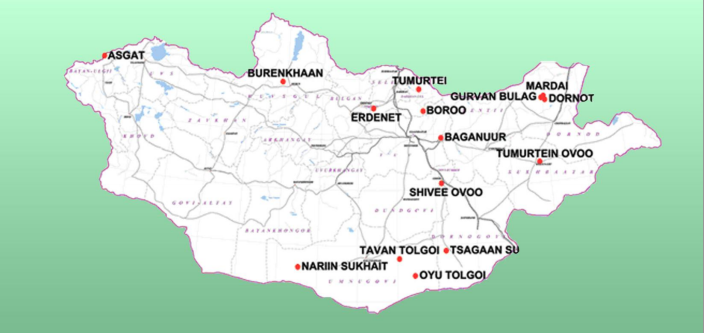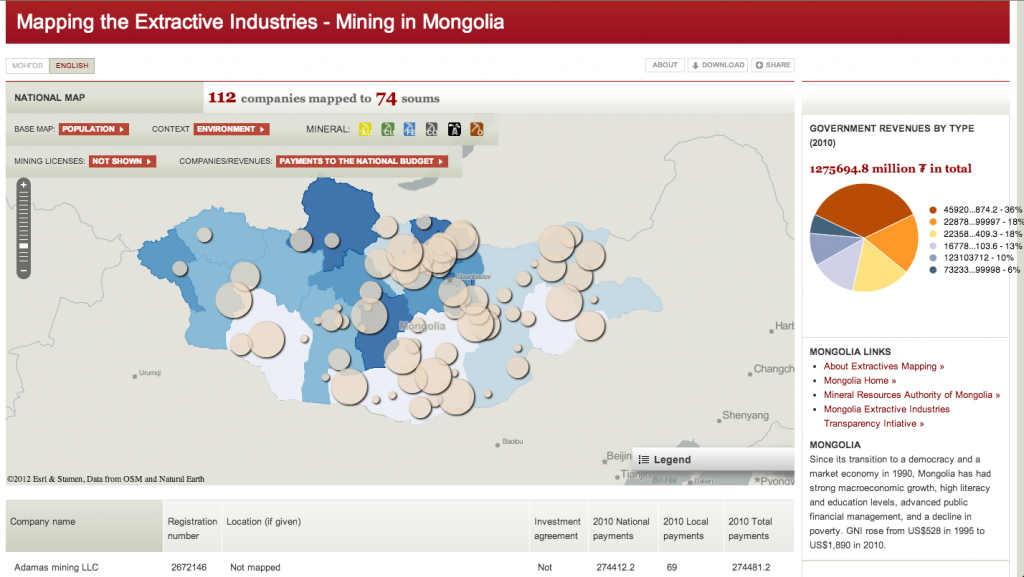Christopher J. Carter // March 9th 2014
This week we began to analyze the 2011 Mongolia EITI report. One concept that emerged initially is how to visualize the spatial reporting and mass data of locally and nationally received payments coming from the development Mongolia’s strategic mineral deposits.
One tool for our study and civil society in the study of the Mongolia EITI is the Extractive Industries Map of Mongolia a data visualization platform initiated by the World Bank Institute and is available in both Mongolian and English languages. Layers are fully customizable and maps can be created from the platform and feature mining concessions, company payments(local and national), government revenues, local donations from companies, special protected areas, forested areas, socioeconomic and other development indicators.
The Extractive Industries Map of Mongolia is an online, publicly-accessible, interactive mapping application focused on the extractive industries of oil, gas and mining. With this tool, users can map an array of data about the sector, including the statistics about mining and petroleum licenses, company activities, socioeconomic indicators such as unemployment and infant mortality rates, government revenues, and civil society activities. The goal is to create a tool that advocates and policy-makers can use to understand issues in the mining and oil sectors and advocate for solutions.
The platform was piloted in Ghana and has been scaled out to Mongolia based on new demands there. By allowing users to create their own maps of this information, the relationships between mining, socioeconomic factors and other related data can be better explored and understood than through the sole use of tables and text, and provides a central space through which a variety of information can be accesssed. Data is a compilation of World Bank Institute data in partnership with the Extractive Industries Transparency Initiative Mongolia, National Statistical Office of Mongolia and the Mongolia Country Office of the World Bank data bases.
What does this tool and the EITI really mean for civil society , industry and government stakeholders? Can it be done better?
As we examine the implications of EITI reporting in Mongolia in the next few weeks, we hope to learn just that.

